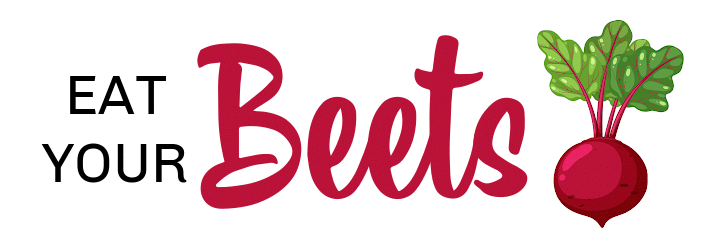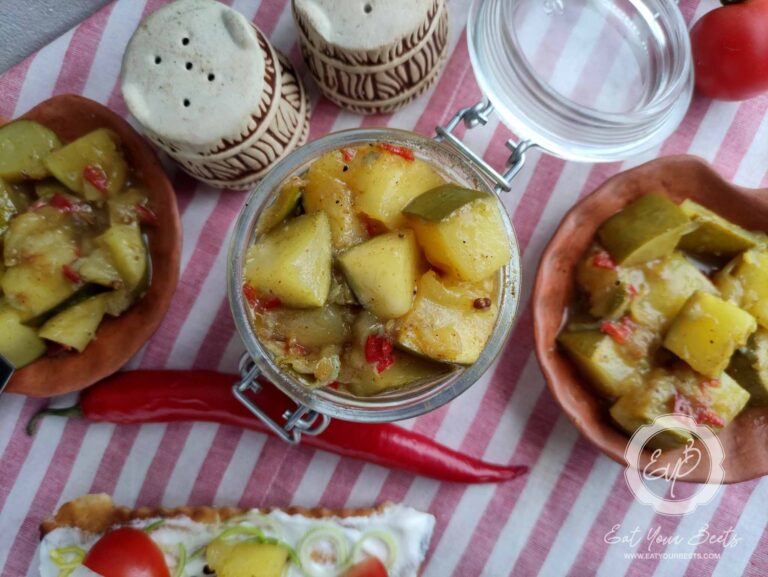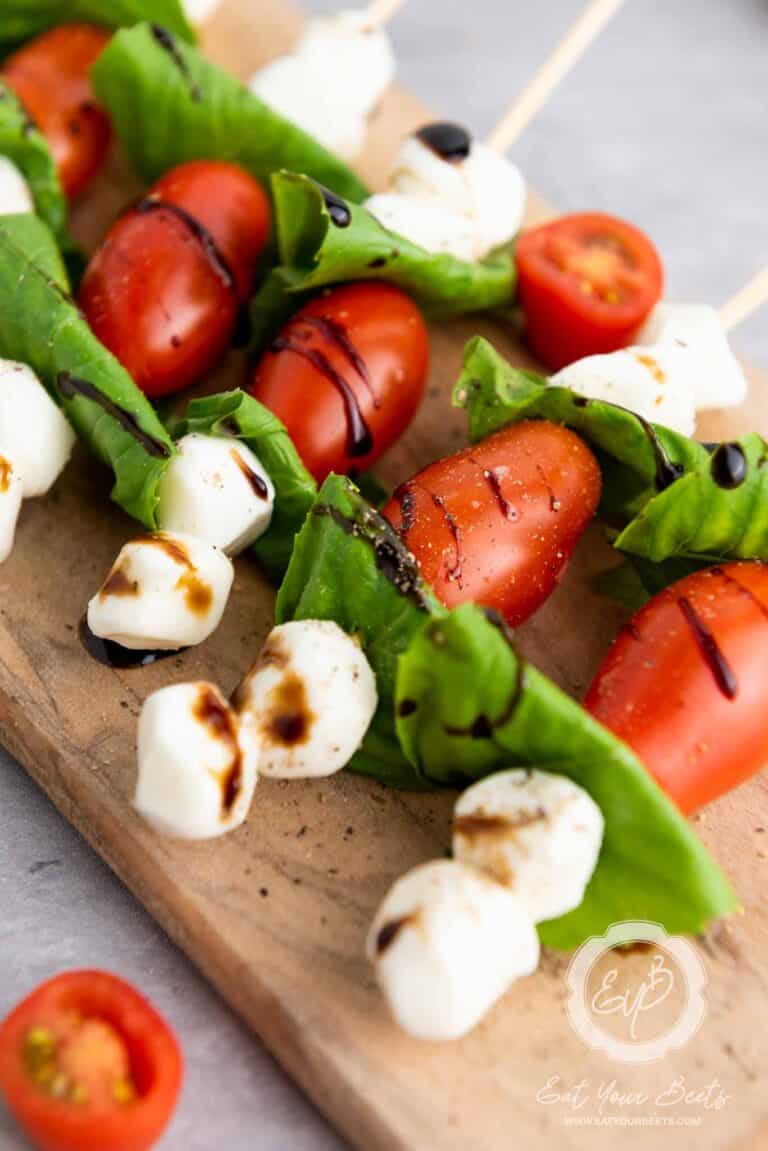What Color Is Beetroot?
Do you know what color is beetroot? No worries if you don’t – it turns out there’s a little more to this vegetable than meets the eye. Beetroot may be recognizable for its vibrant purple or red hue, but did you know that it can also come in shades of white, golden yellow, and even pink?
It’s time to give this often-overlooked veggie some respect! In this blog post, we’ll explore different colors of beetroots, discuss their nutritional values and share delicious recipes featuring them. Enjoy your journey through the world of colorful beets!

Contents
What Is Beetroot?
Beetroot, or simply “beet,” is a root vegetable that belongs to the same family as chard and spinach. It comes in a variety of shapes and colors, but the most common type is the garden beet or table beet, which is typically deep red.
In British English, it is often referred to as “beetroot,” while in the US, it’s simply called “beet.” It is a popular dinner beet that tastes great roasted, boiled, or baked.
Is Beetroot A Fruit?
No, beetroot is not a fruit. It’s actually a type of root vegetable. The beetroot, or simply the beet, is the taproot part of the beet plant.
Why Is It Necessary To Know About The Colors Of Beets?
Beets come in a variety of hues – the most common being deep purple-red, but they are also available in golden yellow, white, and even striped varieties like the Chioggia beet. Each color variant has a distinct flavor profile, which can significantly impact your culinary creations.
For instance, red beets have a strong, earthy, sweet, and slightly bitter flavor, while golden beets are milder and sweeter. White beets tend to taste less earthy and more neutral. Knowing about these color variations allows chefs to add both visual appeal and unique flavors to their dishes.
Plus, the different colored beets come with varying nutritional benefits, making them a healthy addition to any meal.
What Color Is Beetroot?
What color is beetroot? Beetroot, scientifically known as Beta Vulgaris, is recognized for its distinctive color palette that predominantly showcases shades of red and dark red color. The color can vary due to different degrees of zoning noticeable in slices.
Interestingly, beetroot is not just about the edible taproots; the leaves, often called beet greens, also hold significant culinary value. Some varieties of this table beet even offer a mix of colors such as white, red with white rings, and yellow with light rings.
However, the classic red beet, bordering on fuchsia, remains the most common image that comes to mind when one thinks of beetroot.
Why Beetroot Is Red?
Isn’t nature fascinating? Take the red beet, for instance, or as it’s scientifically known, Beta vulgaris subsp. This humble root vegetable is a visual delight with its vibrant beet-red color. But have you ever wondered how it gets that distinct hue?
It’s all thanks to betalains, a group of pigments that are responsible for the red and yellow colors seen in several fruits, vegetables, and flowers. In beetroots, the red color comes from a type of betalain called betacyanins.
The yellow pigments are also present, known as betaxanthins, but the red-violet betacyanins take center stage, giving the beet root its iconic color.
What Do Beetroots Look Like?
Beetroots are a vibrant, deep maroon color known for their distinctive sweet flavor. They typically have an oval or oblong shape with smooth, reddish-purple skin. Once you cut into them, you’ll find the same rich color throughout their flesh.
Despite their hard exterior, beetroots become tender when cooked, making them a versatile ingredient in many dishes.
Colors Of Different Types Of Beets
Beets, also known as beetroot, are vibrant and versatile vegetables that come in a variety of colors and types. Here’s a glimpse into the color palette of several cultivated varieties of beetroot:
Red Beets
The most common type of beet they have a deep ruby-red color. Varieties include ‘Detroit Dark Red’, ‘Crapaudine’, and ‘Crosby Egyptian’. They are known for their rich, earthy flavor.

Orange Beets
These beets have deep orange skin and bright yellow flesh. They retain their color when cooked, which makes them a visually appealing addition to dishes.
Chioggia Beets
Also known as candy cane or striped beets, Chioggia beets have a unique pink and white striped interior. Their exterior is generally red and named after the Italian town of Chioggia.

Purple Beets
While all beets can appear purple-ish, some specific varieties like ‘Purple Viking’ have especially dark, almost black-purple skins and deep red flesh.

Golden Beets
As the name suggests, golden beet displays a vibrant yellow-gold color. This variety has a slightly sweeter flavor compared to red beets and doesn’t stain as much.

Yellow Beets
Yellow beets have a light yellow flesh and a less earthy and sweeter taste than red beets.
White Beets
White beets, also known as albino or sugar beets, are a variety of beets with creamy white flesh and nearly white skin. They are famously known for being used in commercial sugar production due to their high sugar content, making them the sweetest of all beet varieties.
Unlike their red or golden counterparts, white beets have a milder, slightly sweeter taste and a more delicate texture.

What Color Is Beetroot Leaves?
Beetroot leaves are typically dark green with characteristic red veining. The stems are often thin and burgundy-colored. However, changes in soil conditions, such as increased acidity or lack of phosphorus, can cause the leaves to turn red or purple.
What Are Beet Greens?
Beet greens are the deep red-veined leaves that grow on beets. They have a mild, sweet, and slightly earthy flavor. These nutrient-packed greens and stems can be used in various dishes, from salads to sautés.
Not only are they completely edible, but they are also some of the most nutrient-rich greens around, containing more antioxidants and other phytonutrients than the bulbous roots themselves.
Can Beets Change The Color Of Your Urine?
Consuming beets or foods colored with beetroot can indeed change the color of your urine. This phenomenon, known as “beeturia,” is characterized by passing red or pink urine after beet consumption.
The color change is due to a compound in beets called betanin, which gives the vegetable its bright red pigment. Some individuals may have difficulty breaking down this pigment, causing it to travel to the kidneys and get flushed out in the urine as a red or pink color.
Can You Make Natural Red Food Coloring Using Red Beet?
Yes, you can make natural red food coloring using red beet. The beauty of using beet root as a natural food coloring is that it’s not just visually appealing but also nutritionally beneficial. Below are the steps you can follow to extract your natural food color:
- Selection: Start by choosing a beet that is firm and smooth. Larger beets are often more fibrous and less flavorful, so medium or small-sized beets are usually the best choice.
- Cleaning: Scrub the beet under cold running water to remove any dirt or grime. Do not peel the beet yet, as the skin helps to keep the color intact during cooking.
- Cooking: The simplest way to extract the color is by boiling the beet. Cut the beet into quarters and place it in a pot of water. Bring the water to a boil; after that, reduce the heat and let it simmer until the beet pieces are tender. This could take anywhere from 30 minutes to an hour, depending on the size of the beet pieces.
- Extraction: After the beet is cooked, the colored water is your natural food dye. You can strain out the beet pieces and let the liquid cool. Now, you have beautiful, vibrant, natural red food coloring!
You can use this natural red food coloring in a variety of culinary creations, from frosting and cakes to pasta and drinks. Just remember that beet juice does have its own mild flavor, so it’s best used in recipes where it will complement the other ingredients.
Also, note that beet coloring is sensitive to heat and pH changes. It retains its color best in cooler temperatures and slightly acidic environments. So, if you’re baking or cooking with it, the color may change slightly, but it will still give a beautiful hue to your dishes.
Beetroot Nutritional Values
Here’s a comprehensive nutritional profile for 100 grams of beetroot:
- Calories: Beetroot has approximately 43-58 calories per 100 grams, depending on whether it’s raw or cooked. This low-calorie count makes it an excellent choice for those trying to manage their weight.
- Water: Beetroot is made up of about 88% water, making it a hydrating vegetable that can help maintain good bodily function.
- Protein: Beetroot contains about 1.6 grams of protein per 100 grams. While not a high source of protein, it still contributes to your daily protein intake.
- Fats: Beetroot is virtually fat-free, with only 0.2 grams of fat per 100 grams. This makes it a heart-healthy choice for those watching their fat intake.
- Carbohydrates: Beetroot contains approximately 9.6 grams of carbohydrates per 100 grams, most of which are naturally occurring sugars (about 6.8 grams). The remaining carbohydrates come from dietary fiber.
- Fiber: Beetroot is a good source of dietary fiber, offering about 2.8 grams per 100 grams. Dietary fiber is essential for maintaining good digestive health and can help prevent constipation.
- Vitamins And Minerals: Beetroot is rich in several vitamins and minerals. It contains potassium, magnesium, vitamin C, and other nutrients. Iron is also present in beetroot but in lower amounts.
- Sodium: The sodium content in beetroot is relatively low, making it a good choice for those monitoring their sodium intake.
Remember, the way you prepare beetroot can affect its nutritional profile. Boiling or roasting may cause nutrient loss, while juicing may remove some fiber content. Regardless, incorporating beetroot into your diet can provide a wealth of nutritional benefits.
Delicious Beetroot Recipes To Try
Beetroots are not only vibrant and beautiful, but they’re also packed with essential nutrients. So, here are three scrumptious beetroot recipes that you absolutely must try!
- Citrus And Honey Roasted Beets: This unique beetroot recipe is a flavor bomb! The citrus and honey perfectly balance the earthy taste of the beets. The recipe is simple to follow, making it an excellent dish for both weekday dinners and special occasions. If you want to explore this recipe in detail, click here!
- Instant Pot Beetroot Soup: This is a quick and easy beetroot soup made in an Instant Pot. It’s nutritious, hearty, and perfect for those chilly nights. Thanks to the Instant Pot, the recipe is time-efficient, and the soup tastes absolutely delicious. To learn more about this recipe, click here!
- Vegetable Puree With Beetroot: This recipe is a great way to incorporate more vegetables into your diet. The puree is smooth, flavorful, and beautiful, thanks to the beetroots. It’s a versatile dish that is served as a side or used as a base for other dishes. To learn more about this recipe, click here!
So, What Color Is Beetroot? Conclusion
In conclusion, the answer to “What color is beetroot?” is a deep red. Not only is this root vegetable visually appealing, but it also provides numerous nutritional benefits. Beetroot can be used as an all-natural food coloring or enjoyed in a variety of recipes.
If you’re looking for an easy way to add more nutrition to your daily diet, consider incorporating some of these beetroot recipes into your meal plan!






